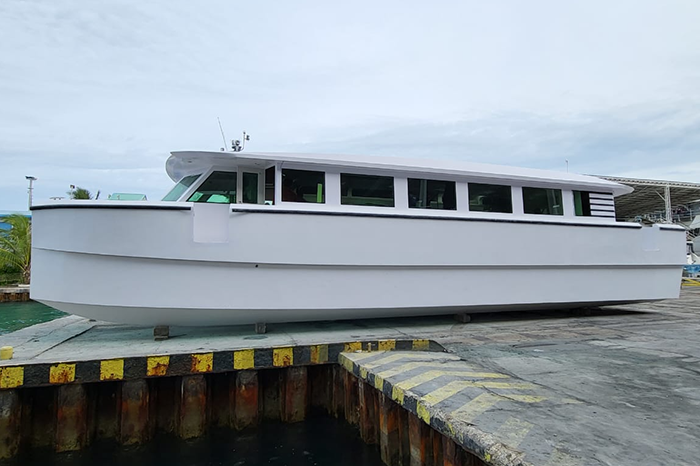
UNDERSTANDING BOAT DESIGN PROCESS: CONCEPT TO CREATION
The boat design process is a multi-faceted and technical endeavor that encompasses several stages, each with its own set of challenges and considerations. The process requires a comprehensive understanding of naval architecture, structural engineering, and materials science. In this article, we will outline the four primary stages of the boat design process and the specific technical considerations involved in each stage.
Stage 1: Conceptual Design
The initial stage of the boat design process is conceptual design. This stage involves creating initial sketches and concepts that will ultimately be refined and developed into a final design. During this stage, the designer must take into account factors such as the intended use of the boat, the type of water it will operate in, and the number of passengers and crew it must accommodate. Additionally, the designer will consider the overall aesthetic of the boat, including its lines, shape, and style.

- Brainstorming: The designer will gather information and ideas about the project and begin sketching various concepts that could work.
- Research: It is important to research the intended use of the boat and the type of water it will operate in, as well as the number of passengers and crew it must accommodate.
- Evaluation: After creating several concepts, the designer will evaluate each one, taking into account factors such as feasibility, cost, and overall aesthetic.
- Concept Sketches: The designer will sketch out different concepts, keeping in mind the intended use, size, and overall aesthetic of the boat.
- Profile/top view 2D: The designer will create a 2D profile and top view of the boat, which will provide a detailed view of the overall shape and layout.
Stage 2: 3D Visualization & Renderings
Once the designer has settled on a final concept, the next step in the boat design is to create a 3D visualization of the boat. This stage involves creating a detailed, three-dimensional model of the boat that can be viewed from all angles. The model will include all of the major components of the boat, including the hull, deck, and superstructure.

- Complete 3D model: The designer will create a detailed 3D model of the boat’s exterior, including all of the major components such as the hull, deck, and superstructure.
- Photo-realistic renders: The designer will then create photo-realistic renders of the boat, using advanced texturing, lighting, and rendering techniques.
Stage 3: Detailed Design & Construction Drawings
Once the 3D model is complete, the final step in the boat design process is to create detailed construction plans. These plans will include all of the information necessary to build the boat, including detailed plans for the hull, deck, and superstructure, as well as specifications for materials and components.

- Final hull shape optimization: The designer will use the results of structural calculations to further optimize the shape of the hull for improved performance and stability.
- Weight Estimate: The designer will also estimate the weight of the boat, taking into account all of the materials and components that will be used in its construction.
- Structural Drawings: The designer will perform structural calculations to determine the strength and stability of the boat. These calculations will take into account factors such as the weight of the boat, the forces it will be subjected to, and the materials used in its construction.
- Stability: The designer will also perform stability calculations to ensure that the boat will remain upright and stable in various conditions. This will include determining the center of gravity and the metacentric height of the boat.
- Resistance and Powering Calculation: The designer will also perform resistance calculations to determine the amount of drag the boat will experience in the water. This will be used to optimize the boat’s hull shape and propulsion system.
- CNC Files: The designer will create CNC (computer numerical control) files, which will be used to control computer-controlled cutting machines during the construction process. These files will contain precise instructions for cutting and shaping the materials used in the construction of the boat.
- Manufacturing Drawings: The designer will create detailed manufacturing drawings for each component of the boat, including the hull, deck, and superstructure. These drawings will contain all of the necessary information for the construction and assembly of the boat, including dimensions, material specifications, and fastening locations.
- Bill of Materials: The designer will also create a bill of materials, which is a comprehensive list of all the materials and components that will be required to construct the boat. This list will include items such as the type and quantity of materials, as well as the suppliers and vendors who will be providing them.
Stage 4: Launch & sea trials
After the construction is completed, the boat is launched into the water. This can be done by either hauling it out of the dry dock or sliding it down a slipway into the water. Sea trials: Sea trials are conducted to test the boat’s performance and seaworthiness. This includes testing the boat’s speed, maneuverability, stability, and handling. The boat is also checked for any leaks or other issues that may have arisen during the construction process. Any necessary adjustments or repairs are made before the boat is delivered to the client.

In summary, the boat design process is a complex and technical endeavor that involves several stages. Each stage requires a thorough understanding of naval architecture, structural engineering, and materials science. By following these stages and paying attention to the specific technical considerations involved, a designer can create a safe, efficient, and aesthetically pleasing boat that will meet the requirements of the client.
To read about the “QUESTIONS TO ASK A DESIGNER TO BUILD YOUR DREAM BOAT“, click here

0 comments